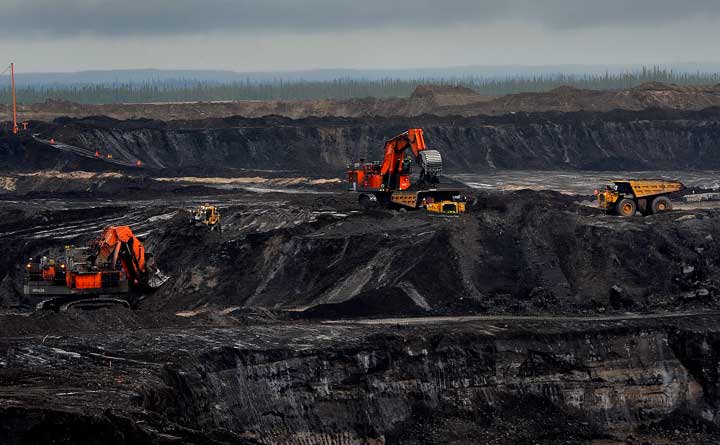Alberta’s enforcing fewer than one per cent of potential environmental violations in its oilsands region, according to a new report from independent researchers, published Tuesday.

Environmental groups Treeline Ecological Research and Global Forest Watch Canada examined records of thousands of environmental incidents associated with a set of oilsands projects from the Environment and Sustainable Resource Development ministry.
The (often incomplete) records indicate that there were over 4,000 “alleged contraventions” – possible violations of environmental regulations that have not been proven in court – in that area since 1996.
According to enforcement reports, in that same time period the ministry took 37 actions to enforce those regulations.
This means, the authors say, that only 0.9 per cent of violations are subject to any kind of enforcement, which could include fines, prosecution and warning letters.
Alberta Environment couldn’t tell Global News what percentage of incidents result in government orders or prosecutions. But spokesperson Jessica Potter said every report goes through a triage process and is investigated individually.
“Not every incident is going to result in a compliance action,” said Potter, when asked generally about the rate of enforcement. “The determination as to whether or not we move forward with an enforcement action entirely depends on what we find in that investigation.”
Environment Minister Diana McQueen has said the province has some of the toughest regulations in the world.
The government is “absolutely not” doing enough to enforce its regulations, said Kevin Timoney, Principal Investigator at Treeline Ecological Research and one of the co-authors of the report.

Get breaking National news
“There is this disconnect between the statement from the government that we have these great regulations and we’re strictly enforcing them, and the reality, which is that there are thousands of violations about which they do nothing,” he said.
A Global News investigation into crude oil spills in the spring of 2013 revealed that Alberta’s energy regulators had been conducting fewer field inspections annually, but finding more instances of high-risk noncompliance. They also rely heavily on industry self-reporting.
In a March interview, incoming Alberta Energy Regulator CEO Jim Ellis said that, “the system is working.”
“We have the resources we need now to properly regulate it. And that includes compliance, on the ground inspections, regulations. … They are capably handling the workload right now.”
Global News had requested further information from the environment ministry on the particulars of this new report, but had not received a response by Tuesday afternoon.
Certain kinds of incidents seemed more likely to get enforcement action, Timoney said.
“It seemed like there was a higher proportion of enforcement for those incidents where we know there was a public outcry. For example, if there was a tip that was given to the media, or some way in which the public learned about it. Those incidents tend to be taken more seriously.”
According to Timoney, unless the public is aware of an incident or is made aware through the media, “there is almost no chance that there will be any enforcement.”
Partly for this reason, Timoney believes that all environmental incidents should be posted online in real-time for the public to view and download, something the Alberta Energy Regulator has already begun to do.
Related: Researchers slam Alberta environment’s record-keeping
Timoney’s report also recommends more enforcement of existing environmental regulations.
“If they simply enforce the regulations that exist, industry will realize they need to do a better job because they’ll be in court half the time,” he said.
Finally, the report also recommends installing cameras at oil sands sites, for example tailings ponds, with a 24-hour live feed that the public can view online to monitor for things like birds landing in the ponds.
“If the tailings ponds management and their staff are doing as good a job as they say they are, let us see them.”
Crude Awakening: 37 years of Alberta oil spills
Read: Environmental incidents in Alberta’s oilsands
Update 5:32 pm eastern time on July 23, 2013: This story was changed to reflect the fact that Global News had requested further information from ESRD but not yet received a response.




Comments